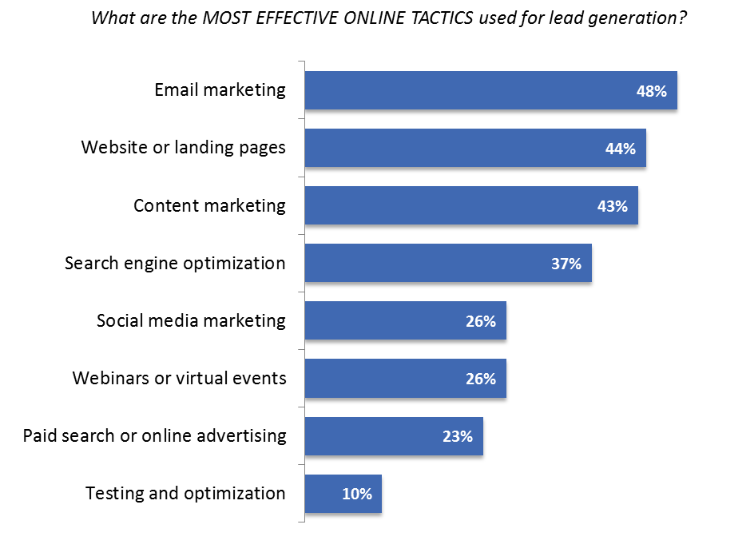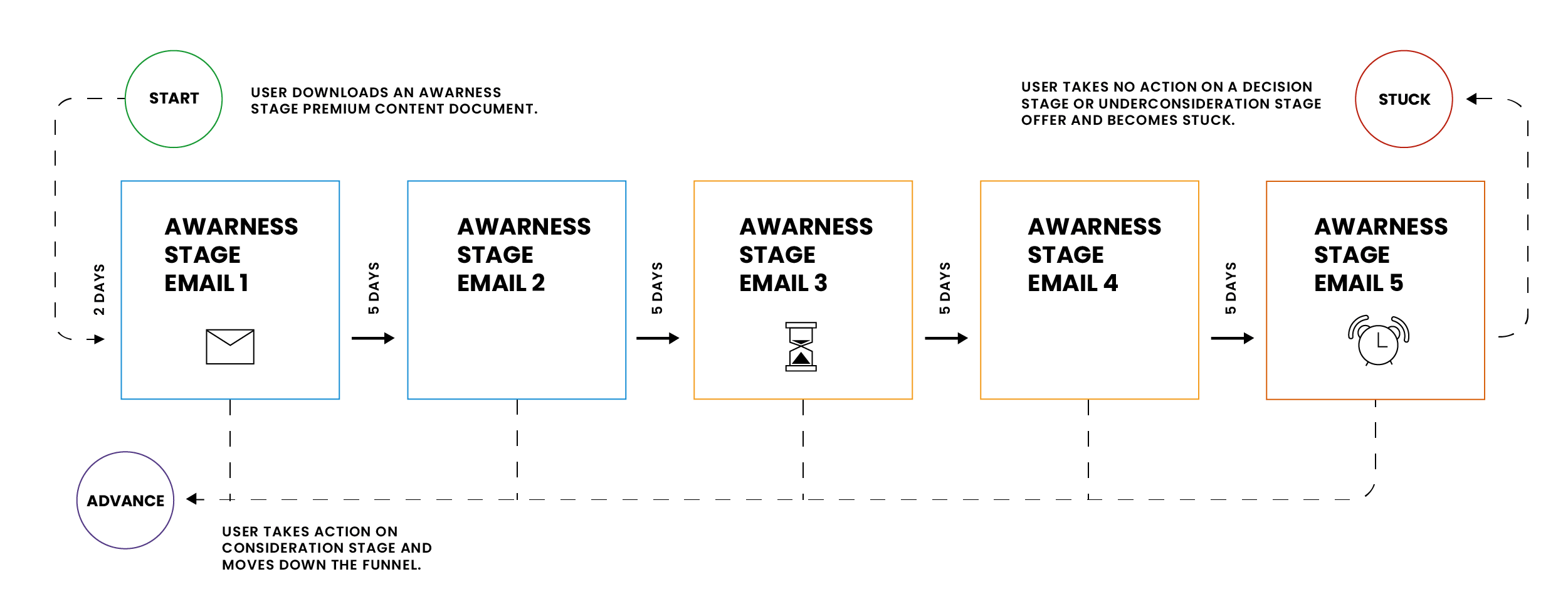In a perfect world, the moment that someone hopped on your email list, they would be standing in line with their credit card in hand.
Unfortunately, that hardly ever takes place. Most leads that have shown even a marginal amount of interest in your brand need to be nurtured along the customer journey.
How do you do this? By slowly-but-surely demonstrating the value that your company’s products or services will bring to their life. Then, when the time is right, ask for the sale.
The best way to accomplish this is through content marketing. And we don’t even need to worry about content formats just yet (articles, videos, ebooks, etc.). You just want to make sure the quality is there. Think about how you can best communicate to your audience, and inundate them with content.
With the right content marketing strategy, many of those leads could later become clients. So what’s a good approach for nurturing your prospects? We have 4 steps to consider.
Step 1: Pick the Group
Most businesses understand the power of email marketing; if not, then it’s well worth your time to investigate. Not only does it have the highest ROI of any marketing channel – nearly $36 of revenue for every $1 spent – but you own your list. You won’t ever have to worry about an algorithm shutting down your account tomorrow.
Assuming you have an email list, you then need to have it segmented according to interest, funnel stage, or origination point. Every one of these groups can have a series of content delivered right to their front door. Start with one, then work through the list and try to identify the needs of each.
Don’t worry – you won’t have to create 100% unique content for each individual customer. Using tools like this paraphrase generator is a great way to personalize the content, even if you’re replicating it across these groups.
Step 2: Pick the Call to Action
Some call to actions (CTAs) are to be used solely at the end of the funnel. Others, depending on the offer and how well you’ve nurtured your leads so far, can be sold as a middle-of-the-funnel buy-in.
Say you’re a developer for Epic Games, the maker of Fortnite, and you’ve developed this Catwoman pickaxe to introduce into the game. It doesn’t cost much and can be a great impulse buy for someone to pick up midway through your funnel. Low cost items like these also help convince the buyer that your more expensive items will be worth it down the road.
In some cases, your CTA won’t even be a purchase, but rather a signup to a mailing list or response to an event. If that’s your goal with a specific segment, tailor the content accordingly.
Kudos is a brand that does a great job of interspersing CTAs throughout their customer funnel. Although they do a great job of attracting leads via organic traffic, they also know the importance of reminding their customers about their services.
Kudos’ chrome extension pops up every time a Kudos customer is executing an online transaction so they can maximize their credit card rewards. It may not sound like a strong CTA, but the repetition keeps them on their customers’ minds and encourages consistent buy-in.
Step 3: Pick the Time
So much of lead nurturing is timing. Send a certain stage too early and you risk either seaming irrelevant, or overwhelming them with content. Send it too late, and they might forget you even existed.
For best results, try to plan your emails at least a few days apart. This may change depending on the specific niche you’re in. An author may be able to get away with sending emails several weeks apart, while a SaaS company may want to send an email out the next day.
The amount of emails may also vary. A general rule of thumb is that the more expensive the product or service is, the longer you need to nurture those leads before pitching the big CTA at the end. More nurturing means more emails, which means more content that needs to be developed and sent to your leads.
Make the time to develop at least a rough funnel strategy, then try to match content to each stage. Certain types of content work better than others, and some content does a great job of “bridging” from topic to topic. For example, this article on choosing the best VPN for Mac targets leads in the consideration stage by providing a comparison of different VPN options for Mac, as well as the pros and cons of each.
Step 4: Pick the Content
Finally, it comes time to pick the content for your leads! By now, you should have a good understanding of who your leads are, what they’re after, and how often they want your content.
From here, it’s a simple matter of matching the right content type/format to the right stage of the funnel.
But picking content isn’t as easy as just emailing your latest blog posts. While that’s nice and may deliver some value, it doesn’t really speak to the customer’s needs. You can certainly choose to include that alongside your automation sequences, but don’t make it the only communication your customers receive.
For this type of content, you need to consider a few things:
- Benefits: Don’t talk about what your product does as much as you talk about how it’ll solve problems. People aren’t looking for things, they’re looking for a transformation. Show them in your emails how that product or service will change their life for the better.
- Growth: How does each piece of content build on the one beforehand? If you’re choosing to show them a whitepaper detailing a technical concept, have you sent them material to explain the basics of it beforehand? Confusion is one of the quickest ways to an unsubscribe.
- Connection: Can the reader tell that you’re actually concerned about helping them, or are you clearly just in it for the sale? Developing a real connection with people is much more likely to turn them into customers at the start, then eventually into raving fans.
If you’re worried about your content being too specific to one customer segment or another, you can always repurpose some of it for other audiences. Changing a few paragraphs or adding a new CTA can do wonders.
As far as visual content goes, there are several resources to help you modify or create great videos and images. Quicktools by Picsart is a really simple tool that makes designing basic digital graphics very accessible.
Turn Those Leads Into Clients by Nurturing Them Through Email
Email marketing – and all marketing, for that matter – is all about relationships. The more you can build a connection with your leads, the quicker you can turn them into customers. Then repeat customers. And then raving fans.
For more great tips, tricks, and how-tos, subscribe to the DivvyHQ blog today!



